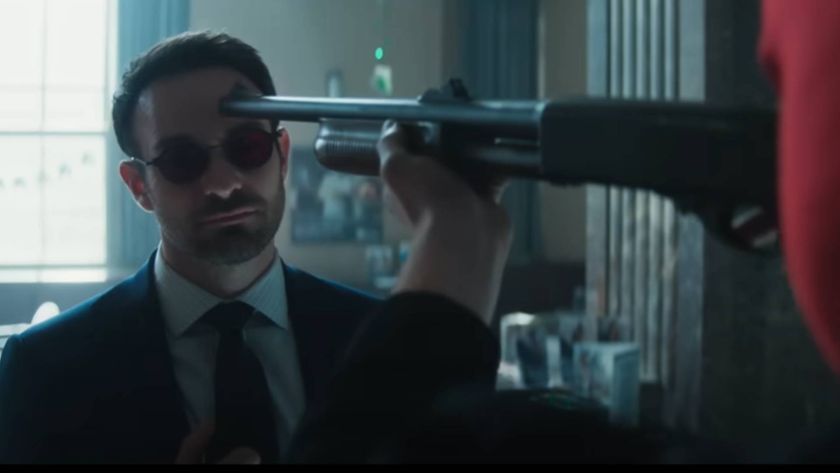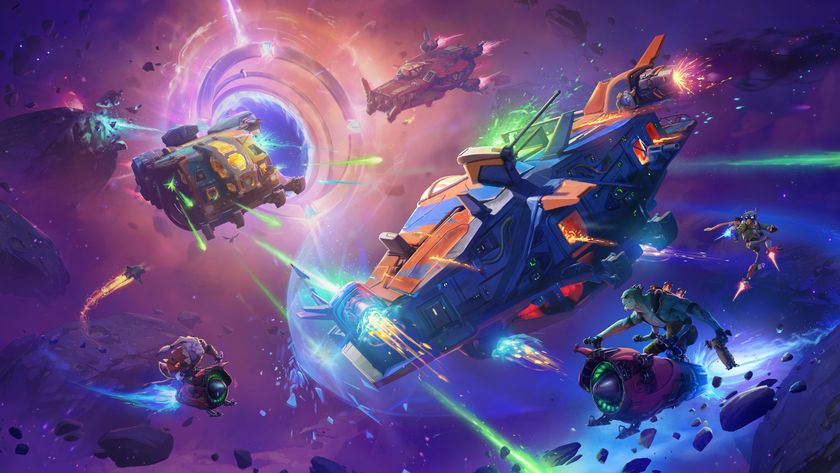The Star Named EOS is a beautiful, deliberate puzzle game where most everything is "a meaningful clue"
Interview | Game producer Weichen Lin talks good puzzles and photography

The Star Named EOS from developer Silver Lining Studio and publisher PLAYISM is no longer my most-anticipated puzzle game of the year. But there's a good reason for that: it has now been released, and I've played and beaten it already. But ahead of release, I had the opportunity to speak with the developer – which also provided some gorgeous concept art – about the new game, photography as a medium, and what makes a good puzzle.
If you're unfamiliar with The Star Named EOS and Silver Lining Studio, the important context here is that the developer previously made Behind the Frame, a deeply moving narrative puzzle adventure game ostensibly about painting and painters. The Star Named EOS is the studio's much-anticipated follow-up, but it swaps paint for pictures. Why? Because it was always meant to be this way.
"Even before our previous work Behind the Frame, we had conceived of a 360-degree panoramic narrative experience centered around photography," says Weichen Lin, game producer for Silver Lining Studio. Because of its scale and the team's development experience at that point, the narrative was instead prioritized for Behind the Frame, but its positive reception ultimately made the team reboot the development and production of The Star Named EOS to embrace that aspect even more.
Worth 1,000 words

The premise of the new game sees players inhabit the role of Dei, who shares a love of photography with his mother, as he attempts to recreate old photo compositions with the help of her letters in order to solve a family mystery that I won't spoil here. I will say that I found the puzzles to be fascinating, and while the game's story didn't resonate with me in the same way as Behind the Frame, it certainly made for an interesting way to tell it.
Every memory worth preserving is carefully selected and cherished
"[Silver Lining Studio] game producer Jeremy [Chang] was deeply influenced by her grandfather during her childhood, sparking a strong interest in photography," adds Lin. "The moment of developing film and receiving the printed photos connected 'memories' with 'photographic prints' for her, becoming the theme of our project centered around photography. Every memory worth preserving is carefully selected and cherished, which is why we believe preserving these emotions would be truly meaningful."
Aside from the gorgeous hand-drawn art, The Star Named EOS shines during its compelling, complex puzzles. More than even Behind the Frame, the puzzles in Silver Lining Studio's new game truly feel supportive of the narrative, serving as connective tissue between them or mechanical segues that while fundamentally different still felt cohesive as a whole. To discuss any of them in detail would spoil their discovery or mechanics, but know that I only beat my head against a solution once before finally discovering it was literally in front of me the whole time.


"One of our core principles in development is figuring out how best to tell a story to effectively convey it to players," says Lin when asked about the struggle of combining gameplay and narrative. "Therefore, we prioritize creating a complete narrative experience first and then decide on the gameplay mechanics to complement it."
Sign up to the 12DOVE Newsletter
Weekly digests, tales from the communities you love, and more
For Behind the Frame, as an example, Lin says the team "believed that visual novel-style storytelling and interactive cutscenes would better clarify the artist's story compared to complex controls." As such, they went with "interactive elements and cutscenes as the backbone of the entire game."
"With The Star Named EOS, we maintain the same core principle, aiming for an experience that resonates with the narrative," continues Lin. "Therefore, we decided to incorporate slightly challenging puzzles to immerse players deeper into the story, hoping to allow players to unravel its mysteries. To ensure these puzzles contribute meaningfully and don't merely extend gameplay time, we devoted considerable effort to design them in a way that ties closely with the story's progression."
Puzzling behavior

Given the game's puzzles really worked for me, and broadly the same can be said for Behind the Frame with some minor caveats, I had to know: what is it that makes a good puzzle? What makes a puzzle bad? Is there a clear, defining difference between the two?
"When designing a puzzle, we consider its context and purpose," says Lin. "We think about why the puzzle exists and why the obstacle needs to be overcome. Every element, even something as simple as a key, must serve as a meaningful clue."
"Why is this here?", "Who locked the door?", and "What can be gained by unlocking it?" are questions that guide the team's design process for each and every puzzle. "To include a puzzle in the game, its solution must enhance the player's understanding of the story," concludes Lin. "Conversely, if a puzzle lacks this depth, it may seem weak and unengaging."
If there's one thing that I can definitively say about The Star Named EOS, having completed it some weeks back during two several-hours-long sessions, it is that it is neither weak nor unengaging.
The Star Named EOS is available for the PS5, Xbox Series X/S, Nintendo Switch, and PC via Steam, the Epic Games Store, GOG, and more. Though it might be out now, there remains plenty of exciting upcoming indie games for 2024 and beyond.

Rollin is the US Managing Editor at 12DOVE. With over 16 years of online journalism experience, Rollin has helped provide coverage of gaming and entertainment for brands like IGN, Inverse, ComicBook.com, and more. While he has approximate knowledge of many things, his work often has a focus on RPGs and animation in addition to franchises like Pokemon and Dragon Age. In his spare time, Rollin likes to import Valkyria Chronicles merch and watch anime.






















